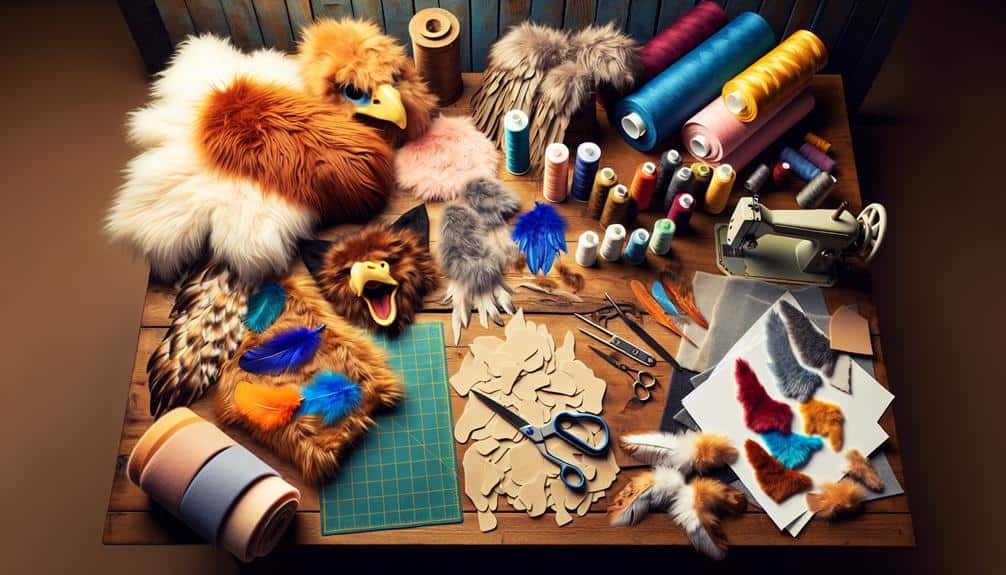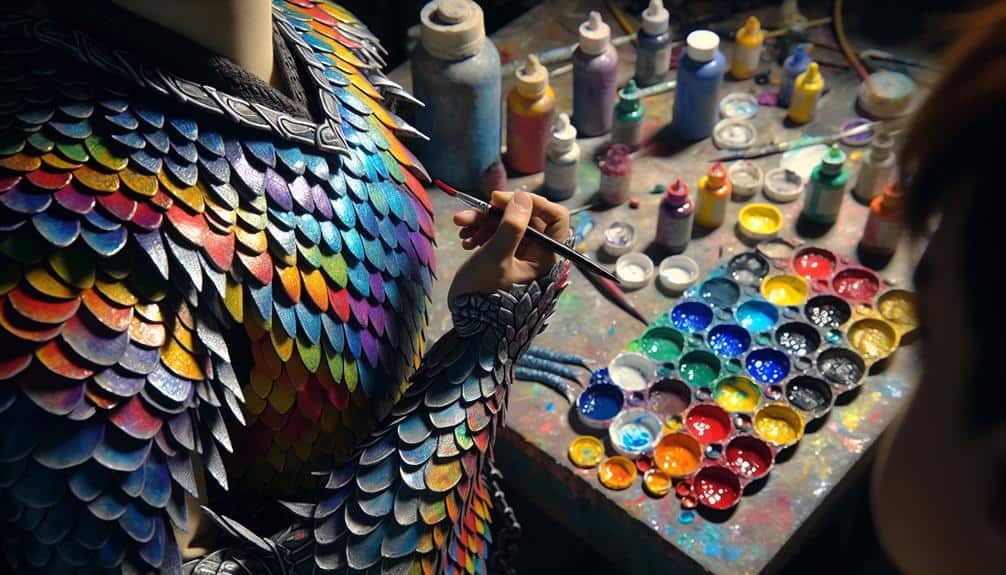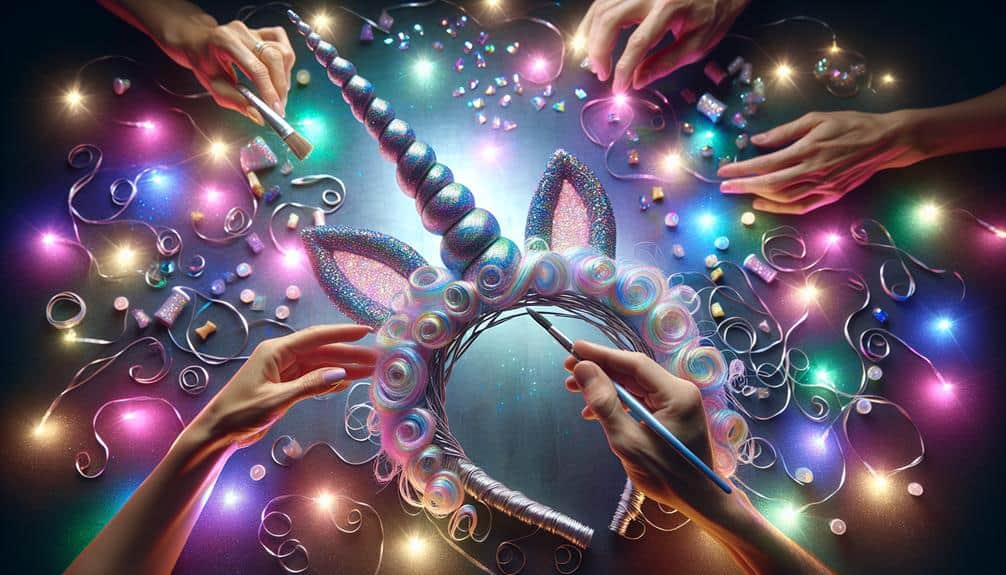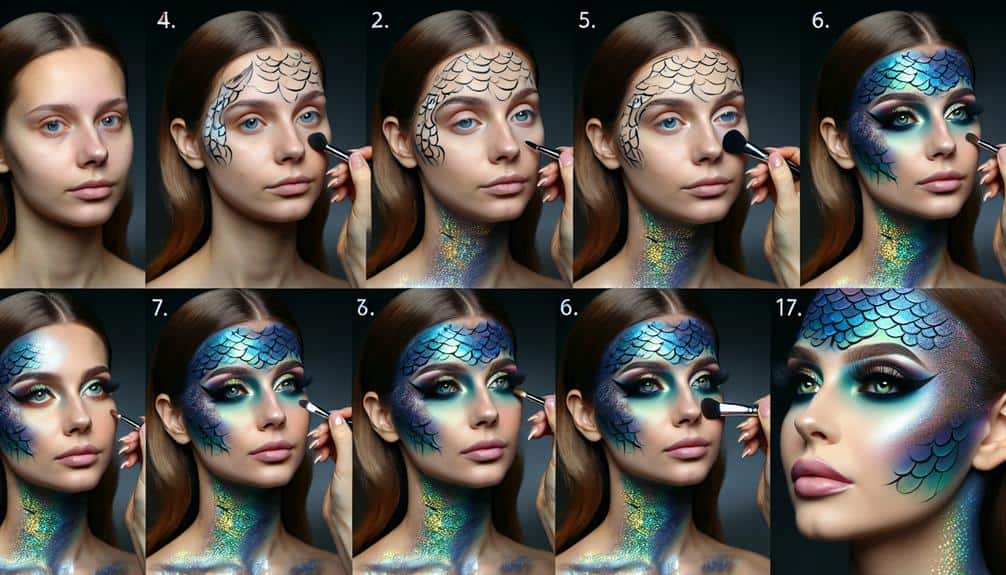When it comes to crafting a griffin costume, feathers become your wings and faux fur, your mane. But that's just the beginning.
Imagine the striking details you can achieve with foam for beaks and claws or wire for essential integrity. And let's not forget about the paints that bring your creation to life.
Each material plays an important role in transforming you into the mythical creature you've always admired. But how do you choose the right ones to make your cosplay truly stand out?
Key Takeaways
- Choose feathers and fur thoughtfully for wings, tail, body, and mane.
- Utilize foam for crafting beak, claws, and details with heat shaping.
- Employ wire for structure and support, using mesh for stability.
- Master painting techniques for realistic colors and intricate details.
Feathers for Wings and Tail
To create realistic wings and a tail for your griffin costume, gather an assortment of feathers in varying sizes and colors to achieve a striking and authentic look. When it comes to feather sourcing, consider checking local craft stores, online shops specializing in feathers, or even repurposing old feathered items like boas or pillows to find a diverse selection. For those looking for alternatives, synthetic feathers can also be a great option for a more sustainable approach.
For the construction of the wings and tail, start by laying out the feathers according to size. Begin at the base of the wing or tail, using larger feathers and gradually incorporating smaller ones towards the edges to create a natural gradient. Secure the feathers onto a sturdy base using hot glue or thread, making sure to overlap them slightly for a seamless finish. To add dimension, consider layering feathers of different hues to mimic the intricate patterns found in real griffin wings. Remember, attention to detail is key in bringing your griffin costume to life.
Faux Fur for Body and Mane
For a plush and lifelike appearance in your griffin costume, the use of faux fur for the body and mane is essential to capture the majestic essence of this mythical creature. When selecting faux fur for your DIY project, consider these key points:
- Texture: Opt for long pile faux fur to mimic the luxurious mane of a griffin.
- Color: Choose a blend of browns, tans, and whites for a natural and realistic look.
- Quality: Look for high-quality faux fur that's soft to the touch and won't shed excessively.
- Length: Make sure the fur is long enough to create a dramatic effect when attached to the costume.
- Maintenance: Select faux fur that's easy to clean and maintain, so your costume accessories stay pristine throughout your cosplay adventures.
Foam for Beak and Claws
Crafting the beak and claws of your griffin costume with foam allows for lightweight and customizable features that enhance the overall look and feel of your mythical creation. Foam crafting is a versatile technique that enables you to sculpt intricate details while keeping the costume comfortable to wear during long cosplay events. When selecting foam for your beak and claws, consider using EVA foam sheets as they're easy to cut, shape, and glue together.
To begin, sketch out the desired shapes for the beak and claws on the foam sheets and carefully cut them out using a sharp craft knife. You can then use heat from a heat gun to gently shape the foam into curved or pointed forms to achieve a realistic look. Once the basic shapes are formed, you can refine the details by adding texture with a dremel tool or sandpaper.
For a professional finish, consider sealing the foam with plasti-dip or a layer of flexible fabric glue before painting. Incorporating foam crafting into your cosplay tutorials will elevate your griffin costume to the next level of craftsmanship and creativity.
Wire for Structure and Support
For enhancing the structural integrity and providing support to your griffin costume, consider incorporating wire into your cosplay creation. Wire bending is an essential skill to master for creating a sturdy framework that will uphold the weight of your costume pieces.
Here are some key items to think about when using wire for your cosplay design:
- Flexible Aluminum Wire: Opt for this lightweight and easy-to-bend wire to create intricate shapes and structures for your costume.
- Wire Cutters: Make sure to have a good pair of wire cutters on hand to trim the wire to the desired length without any hassle.
- Pliers: Use pliers to help with wire bending and shaping, ensuring precision in creating the support framework for your costume.
- Wire Mesh: Incorporate wire mesh for larger structural elements that require more stability and support in your costume design.
- Wire Tape: Secure loose ends and make sure a clean finish by using wire tape to wrap around exposed wire edges, preventing any accidents during wear.
Paints for Detailing and Coloring
To add vibrant and intricate details to your griffin costume, consider exploring a variety of paints for detailing and coloring your creation. Brush techniques play an important role in achieving fine lines and textures. Experiment with different brush sizes and shapes to create feathers, scales, and other intricate patterns on your costume. Color mixing is an essential skill to master for achieving custom shades and gradients. Blend colors on a palette before applying them to your costume for a professional finish.
Fabric dyes offer vibrant colors that can be absorbed into the fabric for a long-lasting effect. Consider using fabric dyes for larger areas that require a uniform and permanent color. Airbrushing techniques allow for smooth changes and gradients, perfect for creating realistic shading and highlighting on your griffin costume. Practice controlling the airbrush for precise detailing and blending of colors to bring your costume to life with a professional touch.
Frequently Asked Questions
Can This Griffin Costume Be Easily Worn and Moved Around In, or Is It More Suited for Display Purposes?
You'll find that the griffin costume strikes a balance between comfort and mobility, making it suitable for both wearing and moving around. It's designed for cosplay purposes but can also be displayed effectively.
How Long Does It Typically Take to Craft a Griffin Costume From Start to Finish?
Crafting a griffin costume, from start to finish, can vary depending on your skills and dedication. The timeframe might range from weeks to months. Challenges arise in intricate details, but the rewards include a stunning masterpiece.
Are There Any Specific Techniques or Tips for Attaching Feathers Securely to the Wings and Tail?
Like a master weaver threading a tapestry, make feather attachment on wings and tail is secure. Use a combination of glue and stitching for durability. Prioritize wearability to prevent feathers from falling off during cosplay.
What Options Are Available for Creating a Realistic Fur Texture for the Body and Mane of the Griffin Costume?
To create a realistic fur texture for your griffin costume, consider using faux fur options like shaggy or long pile fabrics. Attach securely with techniques such as sewing or gluing. Experiment with layering for enhanced realism and dimension.
Are There Any Special Considerations or Precautions to Take When Using Foam for Crafting the Beak and Claws of the Costume?
When working with foam for crafting, safety precautions are key. Always verify proper ventilation, use protective gear, and follow instructions. Balancing safety and creativity will enhance costume mobility and reduce crafting timeframes.



